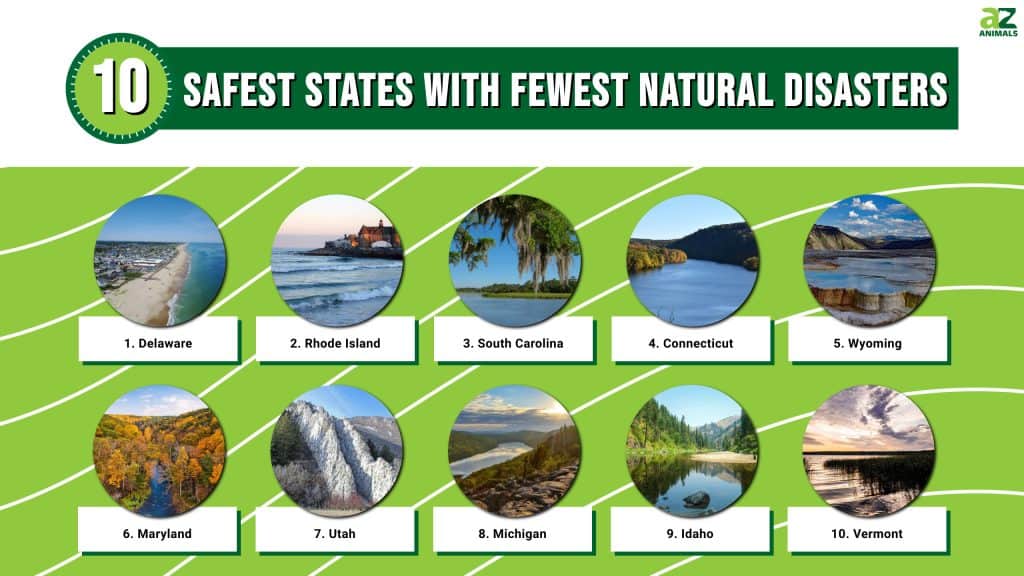
Natural disasters, from hurricanes and earthquakes to wildfires and floods, can have devastating impacts on landscapes. While no place is entirely immune to the forces of nature, some states experience fewer natural disasters compared to others. Here, we present the 10 safest states with the fewest natural disasters in the country.
10. Vermont
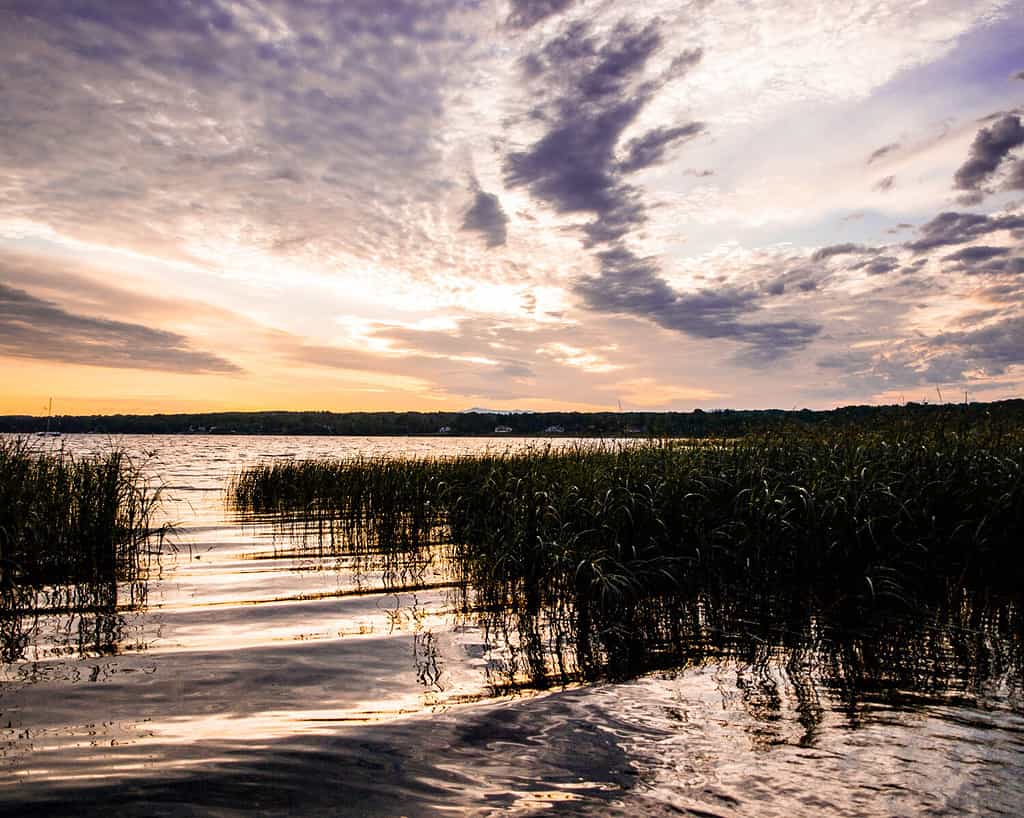
Vermont is not only picturesque, as seen here in Shelburne Bay, but also experiences very few natural disasters.
©damien harshbarger/Shutterstock.com
Nestled in the northeastern corner of the United States, Vermont is renowned for its lush landscapes, charming small towns, and vibrant fall foliage. The state has a relatively low risk of natural disasters. This can likely be attributed to its location away from major fault lines and coastal areas prone to hurricanes.
Vermont’s geographical location plays a significant role in this low occurrence of natural disasters in the state. Unlike states that are situated along major fault lines or are susceptible to coastal hazards, Vermont is positioned away from such geographical vulnerabilities. The absence of coastal exposure shields the state from the full impact of hurricanes and tsunamis. Its inland location also mitigates the risk of coastal flooding.
Vermont’s climate has distinct seasons and manageable temperature variations. This partly contributes to its resilience against extreme weather patterns. While the state does experience heavy snowfall during the winter months, it is well-equipped to handle such conditions. Officials do this through efficient snow removal systems and well-maintained roads. The state’s landscape of mountains, valleys, and rivers also allows for natural drainage. This reduces the risk of flooding compared to flatter terrains.
Vermont’s commitment to environmental conservation has also contributed to its resilience against natural disasters. Efforts to maintain healthy ecosystems, protect watersheds, and manage land use help mitigate the impact of heavy rainfall and potential flooding. These sustainable practices also contribute to the state’s ability to absorb the effects of adverse weather conditions.
Therefore, while Vermont does experience occasional flooding due to heavy rainfall and snowmelt, its proactive approach to disaster preparedness and community resilience has helped minimize the impact of these events.
9. Idaho

The state of Idaho has a lot of natural landscapes like the Clearwater River that are relatively protected from natural disasters.
©davidrh/Shutterstock.com
Idaho has diverse geography, ranging from the Rocky Mountains to vast plains and deep canyons. These protect the state and contribute to its relatively low frequency of natural disasters. The state experiences occasional wildfires, but its inland location protects it from hurricanes, tsunamis, and coastal flooding.
Unlike coastal states that are vulnerable to storm surges and coastal erosion, Idaho enjoys a buffer from these hazards. The state’s mountainous terrain also acts as a natural barrier against strong polar winds from Canada. This barrier further reduces the impact of severe weather patterns.
Idaho’s agencies and communities place a strong emphasis on early detection and rapid response to any potential disasters. This is particularly evident in the case of wildfires. The state invests in advanced fire detection systems which allows firefighting crews to contain fires before they can escalate. Additionally, these emergency response plans ensure that communities can handle various types of disasters.
8. Michigan
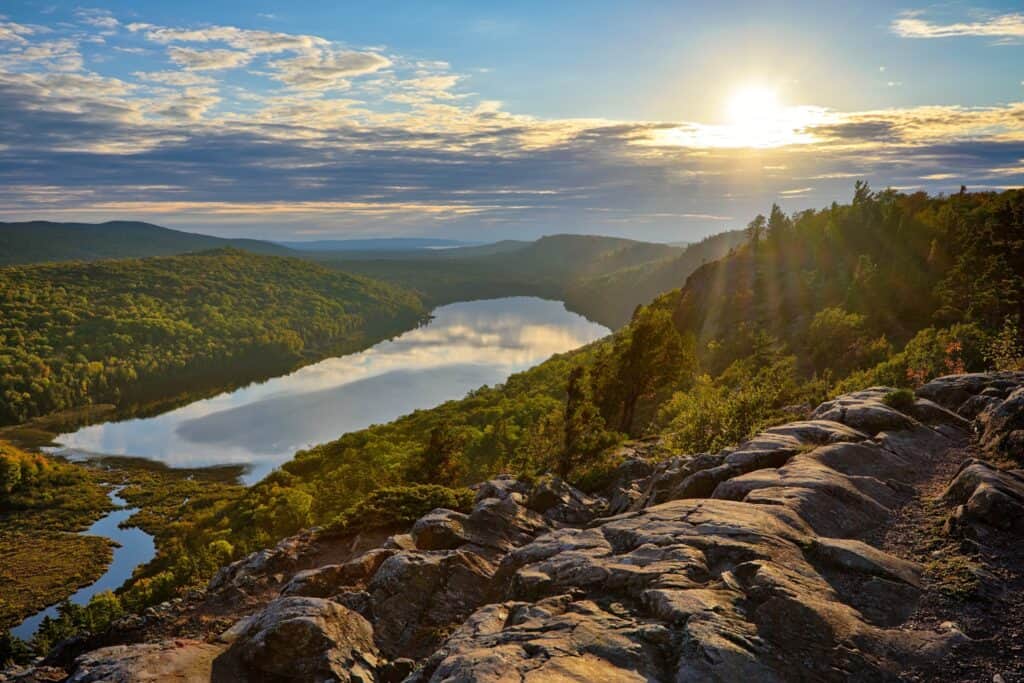
The
Porcupine
Mountains are a series of mountain peaks that are grouped together in the Upper Peninsula of Michigan
©John McCormick/Shutterstock.com
Michigan‘s position among the Great Lakes provides it with a relatively stable climate. The lakes and flat plains shield it from the extreme weather patterns that can lead to natural disasters. While the state does encounter winter storms and occasional flooding due to its extensive coastline, its proactive efforts in disaster preparedness and infrastructure resilience help rank it among states with fewer incidents of natural disasters.
The Great Lakes are vast bodies of freshwater that help regulate the climate, creating a buffer against extreme weather patterns that often lead to natural disasters in other regions. The moderating effect of the lakes tempers any major temperature fluctuations and mitigates the intensity of weather events.
Michigan enjoys a relatively low seismic activity due to its location away from major fault lines. Earthquakes are rare and generally of low magnitude, resulting in minimal damage. This geological stability contributes to the overall sense of safety within the state.
Finally, Michigan’s investment in infrastructure resilience is a key component of its ability to weather potential natural disasters. Durable roadways, bridges, and utility systems are designed to withstand various weather challenges. This foresight not only safeguards residents but also minimizes the long-term costs associated with repairs and reconstruction.
7. Utah
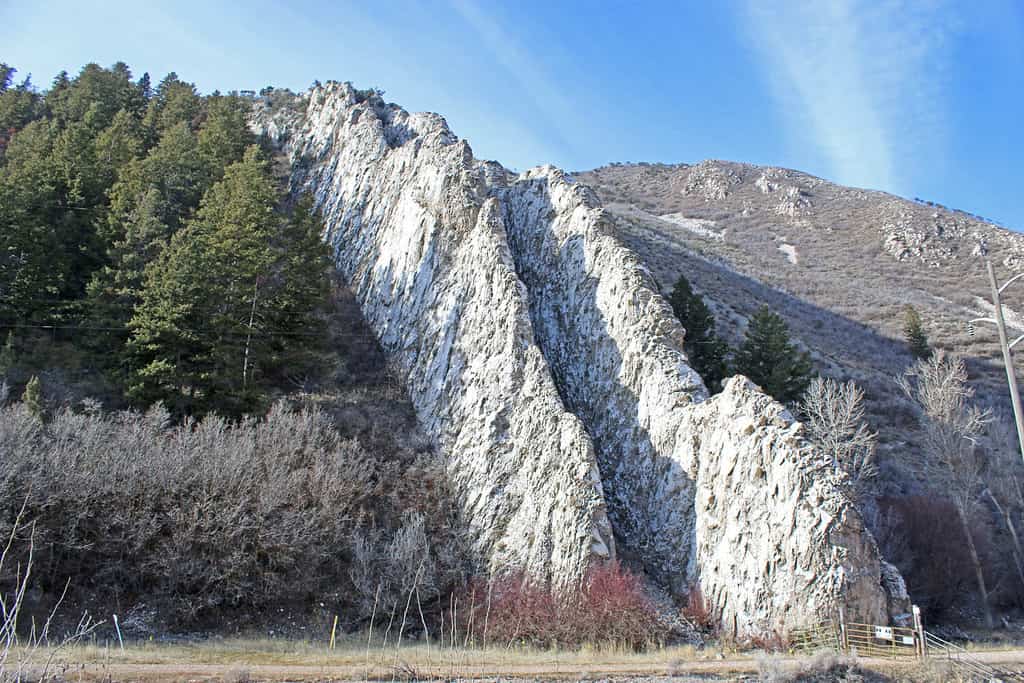
The Devil’s Slide in Utah is a popular vacation spot due to the state’s resilience to natural disasters.
©jennyt/Shutterstock.com
Utah‘s arid climate and diverse landscapes contribute to its relatively low occurrence of natural disasters. While the state does experience occasional earthquakes and wildfires, the frequency and severity of these events are lower compared to other states.
The diverse landscapes of Utah, from sprawling deserts to rugged mountains, create natural barriers that shield it from bad weather. Utah’s arid climate may be harsh on communities, but it is also an advantage. While the state does witness occasional weather events, the lack of coastal exposure reduces its susceptibility to hurricanes, tsunamis, and tropical storms that can wreak havoc in coastal states. The arid climate also contributes to a lower risk of flooding compared to regions with high rainfall.
Utah lies within a seismically active region due to its location in the Basin and Range and Intermountain Seismic Belt. However, the state has taken significant measures to enhance earthquake preparedness. The Utah Division of Emergency Management conducts regular drills and public awareness campaigns to educate residents about earthquake safety measures. Building codes have also been updated to ensure structures can withstand seismic activity, minimizing potential damage and protecting lives.
While Utah does experience wildfires, its proactive approach to prevention and management has helped mitigate the impact of these events. The state collaborates with federal agencies, local communities, and firefighting teams to implement controlled burns. They also remove hazardous vegetation and educate residents about creating defensible spaces around their properties.
Therefore, Utah’s focus on earthquake preparedness and wildfire prevention, coupled with its unique geography, makes it safer than other states.
6. Maryland
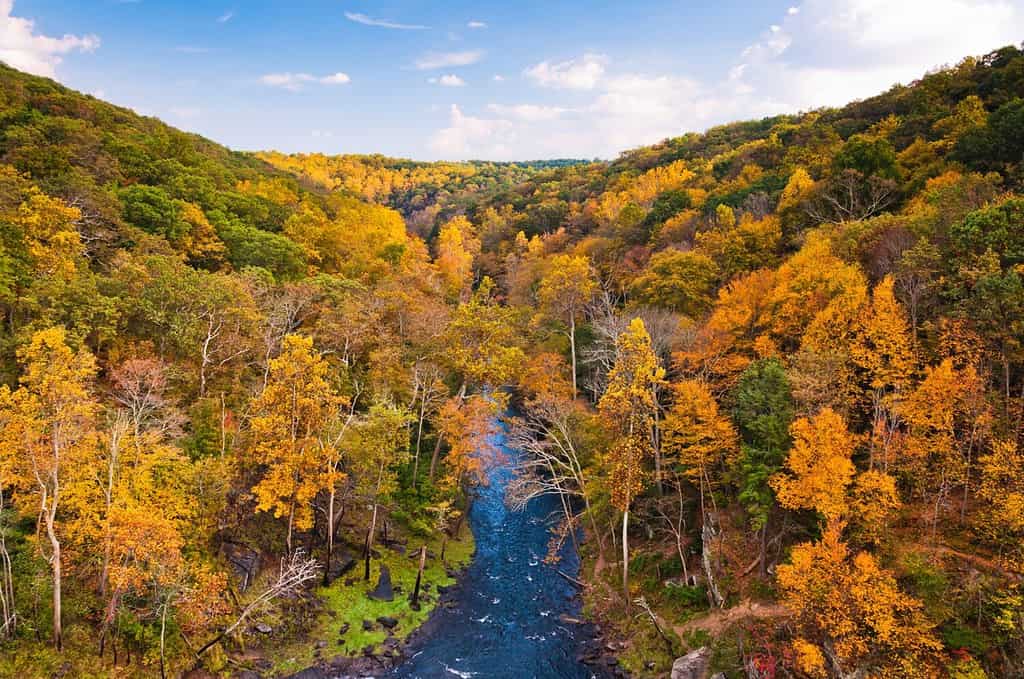
Prettyboy Reservoir in Maryland is a popular vacation spot, thanks to the state’s safe location.
©Walt Bilous/Shutterstock.com
Located along the mid-Atlantic coast, Maryland benefits from its relatively sheltered position in terms of natural disasters. While the state is not entirely immune to hurricanes and coastal flooding, its geographical location and proactive disaster planning help mitigate potential risks.
Due to its proximity to the Chesapeake Bay, Maryland can experience tidal surges during hurricanes. But the shape and location of its shoreline, as well as the gradual coastal slope help dissipate the force of incoming storms.
Unfortunately, Maryland’s coastal areas can still sometimes be vulnerable to the effects of hurricanes and flooding. To counter this vulnerability, the state has implemented shoreline protection measures. These include the construction of seawalls, breakwaters, and levees. These structures are designed to reduce the impact of storm surges and minimize coastal erosion. These measures also contribute to the overall resilience of communities along the coast.
Therefore, Maryland’s focus on community engagement and preparedness contribute to its safety from natural disasters.
5. Wyoming

Yellowstone National Park is a popular vacation spot in Wyoming because of its relative safety from natural disasters.
©alpenart/Shutterstock.com
Wyoming‘s vast open spaces and low population density contribute to a low intensity of natural disasters in the state. While it does experience occasional blizzards and wildfires, its lack of coastal exposure and geographical location aid in its protection.
The state’s landlocked location shields it from the ravages of coastal storms, tsunamis, and hurricanes that often affect states along the coastlines. Wyoming’s landscape, characterized by vast open spaces, prairies, and mountains, also does not favor the rapid spread of wildfires compared to more densely forested regions.
The state’s low population density also adds to its resilience against natural disasters. Since fewer people inhabit Wyoming’s landscape, any potential human impacts and property damage are significantly reduced. This is because sparse population distribution translates to fewer buildings and infrastructure at risk. Thus, the potential scope of destruction is reduced.
While wildfires can still occur in Wyoming, the state’s approach to wildlife management and fire prevention has been effective in minimizing their impact. Controlled burns, early detection, and prompt response mechanisms are integral to curbing their rapid spread.
Therefore, Wyoming’s emphasis on emergency response and wildlife management contributes to its resilience against potential hazards.
4. Connecticut
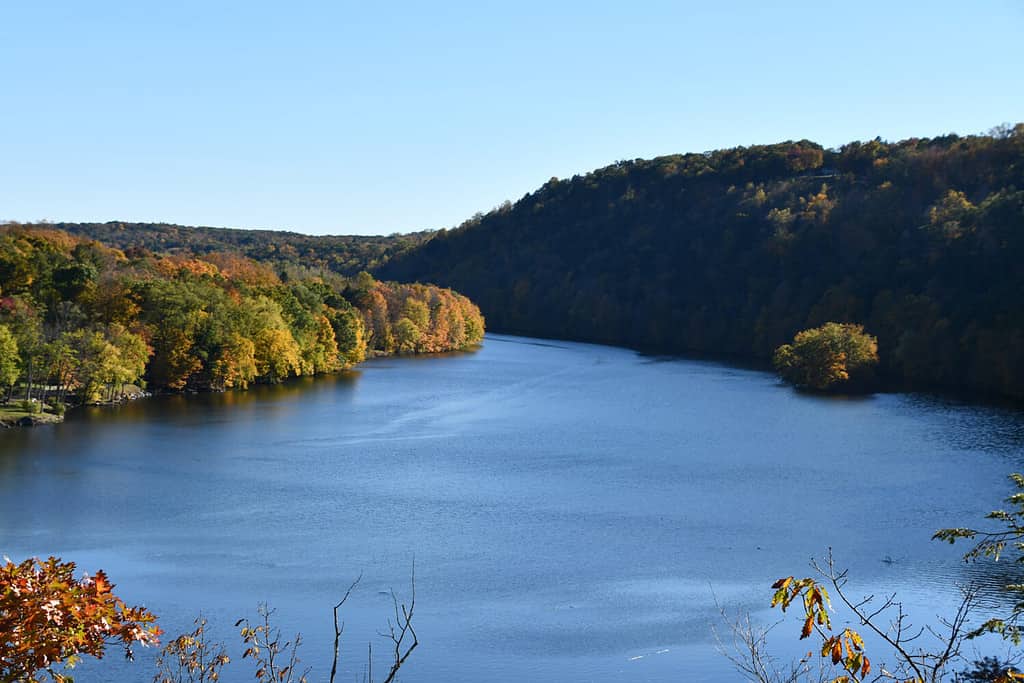
The state is relatively protected against natural disasters due to its ideal location.
©Ritu Manoj Jethani/Shutterstock.com
Connecticut‘s location along the northeastern coast places it at a moderate risk of hurricanes and coastal flooding. However, the state’s well-developed infrastructure, proactive disaster planning, and early warning systems help minimize the impact of potential natural disasters.
While the state is not entirely immune to the impacts of hurricanes and coastal flooding, its geographical placement along the northern stretch of the Atlantic coast provides a degree of protection. Unlike states farther south, Connecticut is less exposed to the direct path of hurricanes, which tend to weaken as they move northward. This relative shelter from the most severe impacts of hurricanes contributes to the state’s resilience.
The state’s commitment to infrastructure resilience also contributes to its ability to weather natural disasters. The government has constructed and maintained roads, bridges, and buildings with an emphasis on withstanding the impacts of severe weather events. Flood-resistant designs, reinforced structures, and sustainable drainage systems ensure that communities can recover fast from any disasters.
The state also encourages public participation in disaster preparedness initiatives. It raises awareness about potential hazards and fosters a culture of readiness. Community education programs, training sessions, and disaster drills empower residents to respond effectively in times of crisis. All of these activities reinforce the state’s overall preparedness strategy. Therefore, Connecticut’s investment in disaster preparedness and its focus on community resilience protect it from natural disasters.
3. South Carolina
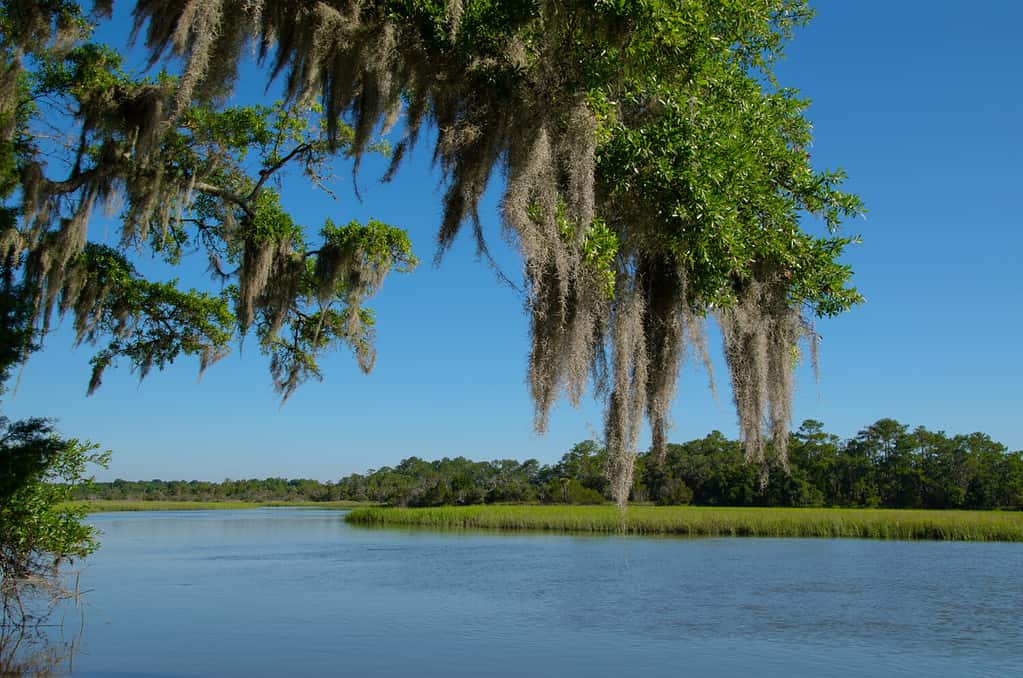
Edisto River in South Carolina is a popular spot thanks to the state’s safe location.
©Serge Skiba/Shutterstock.com
South Carolina’s coastal location does put it at risk of hurricanes and flooding. However, the relatively low frequency of these events, combined with the state’s disaster preparedness, contribute to its ranking among states with fewer natural disasters.
The South Carolina Emergency Management Division (SCEMD) works tirelessly to enhance coastal resilience through evacuation plans, emergency shelters, and public education. The state reduces any potential loss of life and property damage. They do this by ensuring that residents are well-informed and equipped to respond during hurricane threats.
The National Weather Service and local agencies collaborate to provide accurate forecasts and alerts. This helps residents make informed decisions and take necessary precautions. This timely dissemination of information is crucial, particularly during weather events that require swift action, such as hurricanes or severe storms.
South Carolina’s experience with natural disasters, such as Hurricane Hugo in 1989 and Hurricane Matthew in 2016, has prompted the development of comprehensive disaster recovery and preparedness programs. South Carolina’s efforts in hurricane preparedness and community education help minimize the impact of potential hazards.
2. Rhode Island
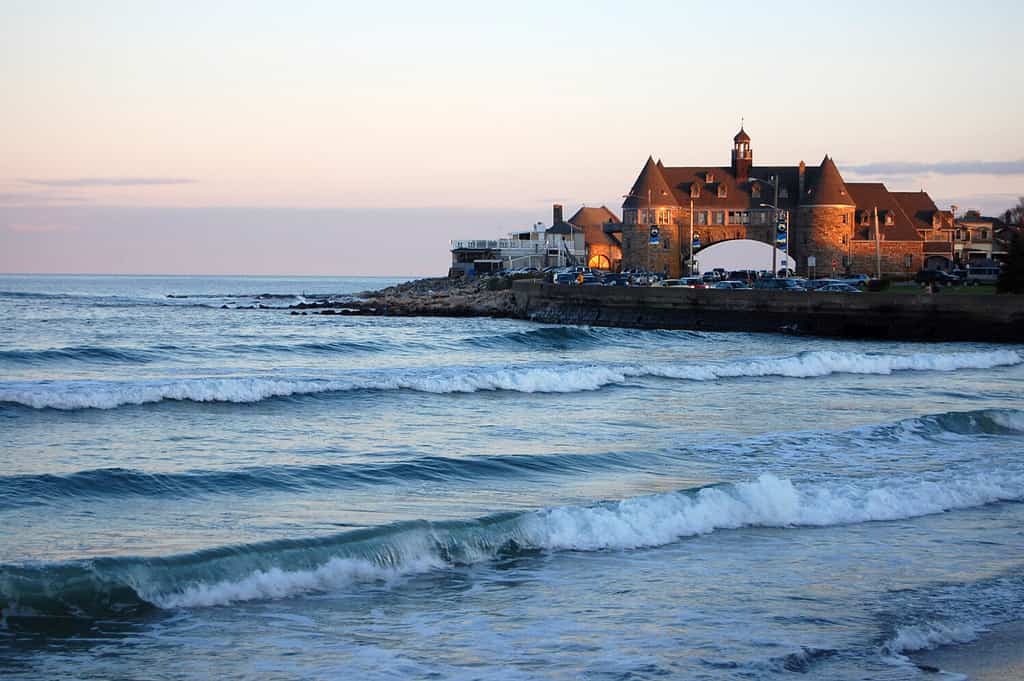
Narragansett Beach in Rhode Island is a popular spot for vacations because the state is safe from natural disasters.
©Laura Stone/Shutterstock.com
Rhode Island‘s small size and northern location shield it from the worst impacts of hurricanes and other natural disasters.
The state’s northern location along the Atlantic coast positions it to receive occasional hurricanes and coastal storms. However, its geography also offers a form of protection. The state’s coastline is relatively short, minimizing the risk of extensive coastal flooding compared to states with longer shorelines. Additionally, Rhode Island’s intricate network of bays and inlets helps dissipate the energy of incoming waves. This further reduces the potential for any catastrophic coastal flooding.
The state is located to the north of any primary storm tracks that bring hurricanes up the eastern seaboard of the country. While this doesn’t completely eliminate the risk of hurricane impacts, it does decrease the likelihood of direct hits and provides a buffer against the most devastating effects.
Unlike states situated along major fault lines, Rhode Island experiences minimal seismic activity. This absence of significant tectonic activity reduces the risk of earthquake-related damage.
Rhode Island’s proactive approach to disaster preparedness, infrastructure resilience, and community engagement contributes to its safety against natural disasters. Furthermore, the state’s efforts in shoreline protection and disaster response planning also play a role in its resilience against potential hazards.
1. Delaware
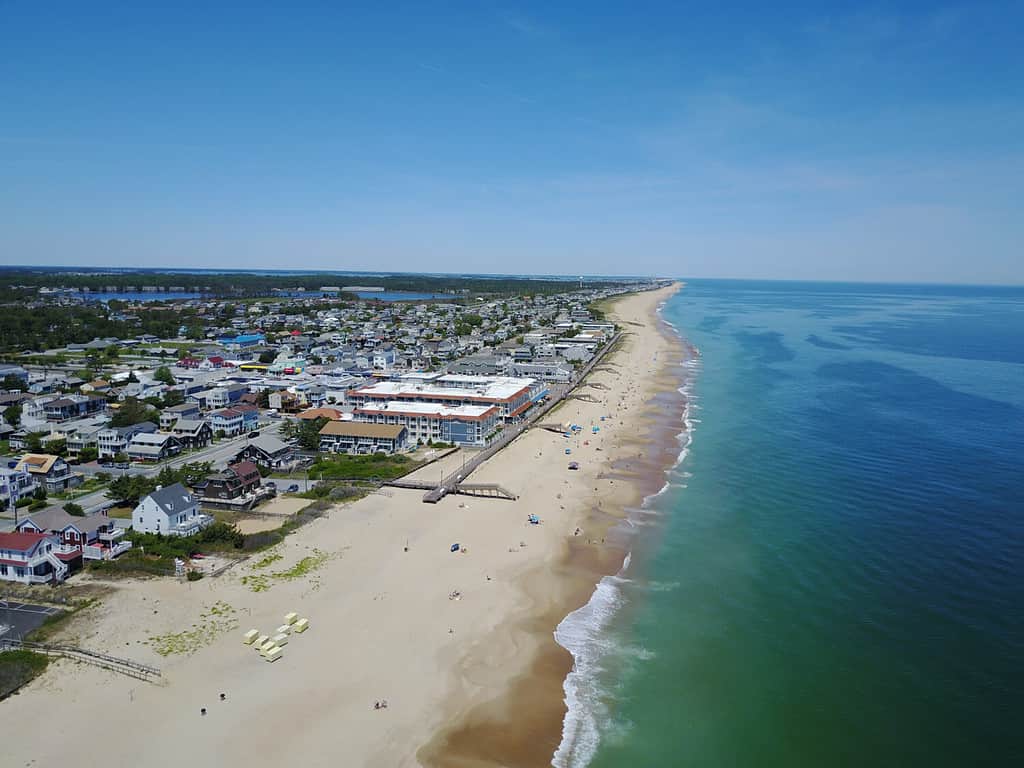
In the United States, Delaware is the safest state from natural disasters.
©Zach Chilelli/Shutterstock.com
Delaware‘s unique geography, situated along the Atlantic coast yet shielded by neighboring states, contributes to its ranking as the state with the fewest natural disasters.
The state’s location, tucked between Maryland and New Jersey, offers it a degree of protection from the most severe impacts of hurricanes. While it is not entirely immune to the effects of coastal storms, its positioning acts as a buffer and reduces any direct hits from powerful hurricanes that can strike other coastal regions.
The state also experiences a relatively stable and temperate climate throughout the year, which minimizes the likelihood of extreme weather events. While it does encounter winter storms and occasional heavy rainfall, the absence of extreme temperature fluctuations and the absence of high-risk geological features, such as fault lines or active volcanoes, significantly reduce the potential for natural disasters.
While Delaware does experience occasional coastal flooding and winter storms, the frequency is relatively low. This combined with its disaster preparedness efforts, infrastructure resilience, and community engagement protects the state from potential hazards.
Summary of the Top 10 Safest States From Natural Disasters
While no place is entirely free from the potential impacts of natural disasters, these 10 states demonstrate that geographical advantages, proactive disaster preparedness, and community engagement can significantly mitigate the risks associated with such events.
| Rank | State |
|---|---|
| 1 | Delaware |
| 2 | Rhode Island |
| 3 | South Carolina |
| 4 | Connecticut |
| 5 | Wyoming |
| 6 | Maryland |
| 7 | Utah |
| 8 | Michigan |
| 9 | Idaho |
| 10 | Vermont |
The photo featured at the top of this post is © Shanshan0312/Shutterstock.com
Thank you for reading! Have some feedback for us? Contact the AZ Animals editorial team.






